| Year-round Resident |
Mallards are abundant year-round residents in the Washington metro area. During the spring, a pair of Mallards can often be seen at Monticello Park.
Where to See Them in the Park
Mallards mostly stay in the upper portion of the stream. They are frequently in the park, but never at any predictable time.
Physical Description
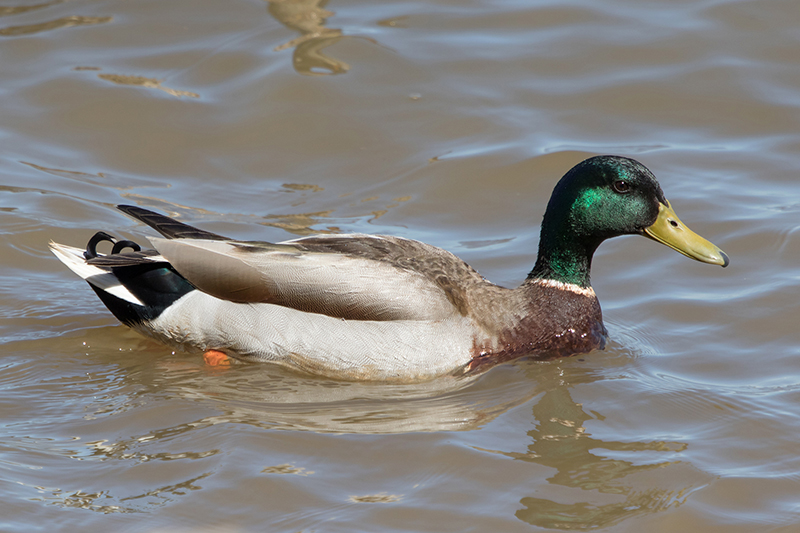
The male Mallard has the familiar iridescent green head, yellow bill, brown breast, gray body, and white ring around the neck.
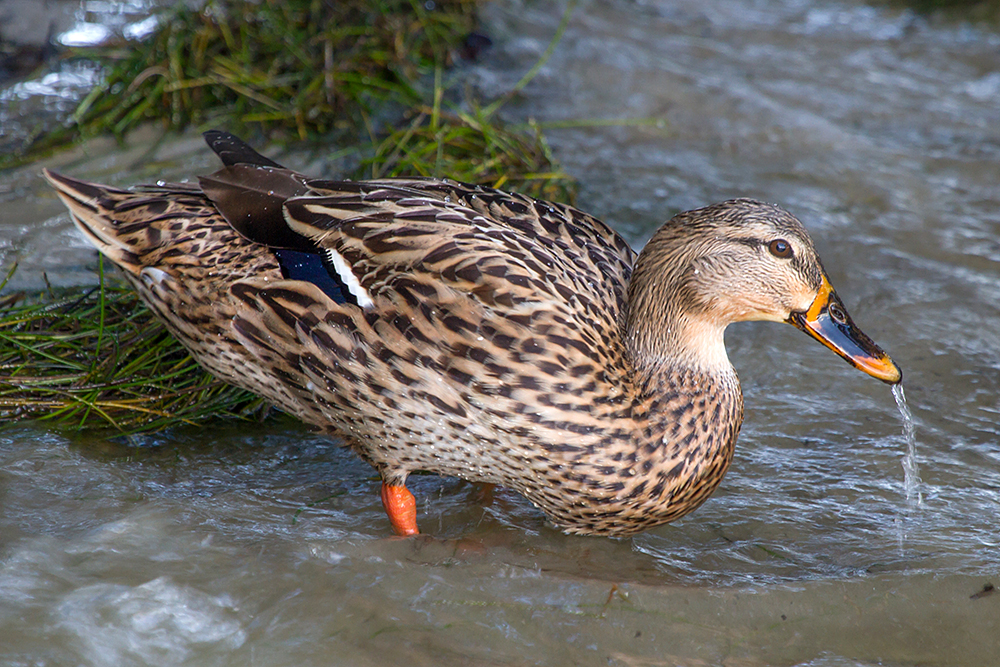
Females are a mottled brown. If you look closely at a female, the patterning on her feathers is lovely.
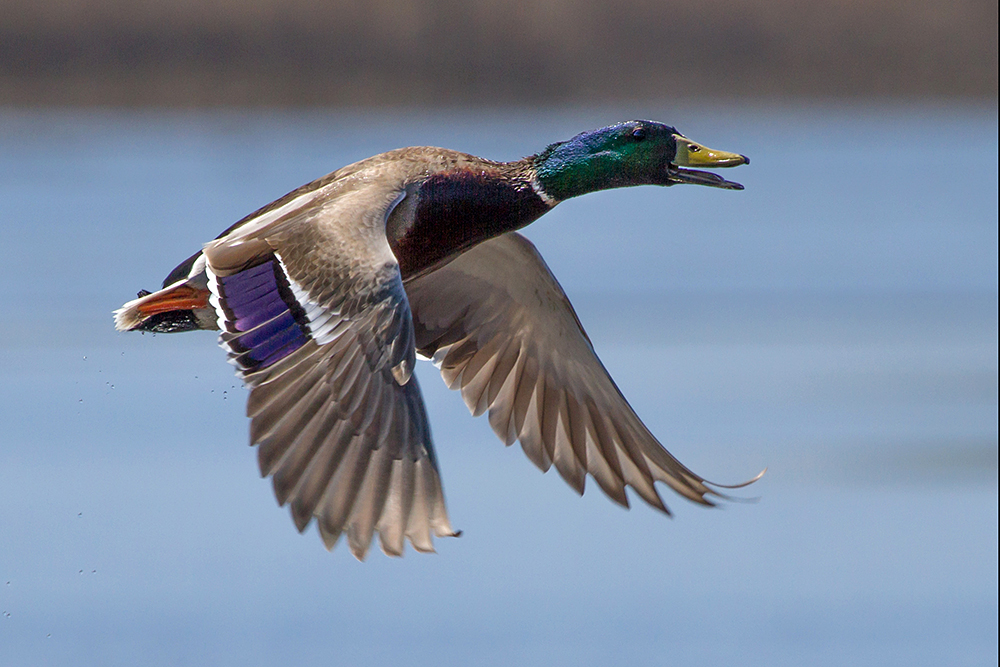
The iridescent violet patch on the male's wing is called a speculum, which comes from the Latin word for mirror. The speculum is used by Mallards and other species of dabbling ducks in courtship displays.
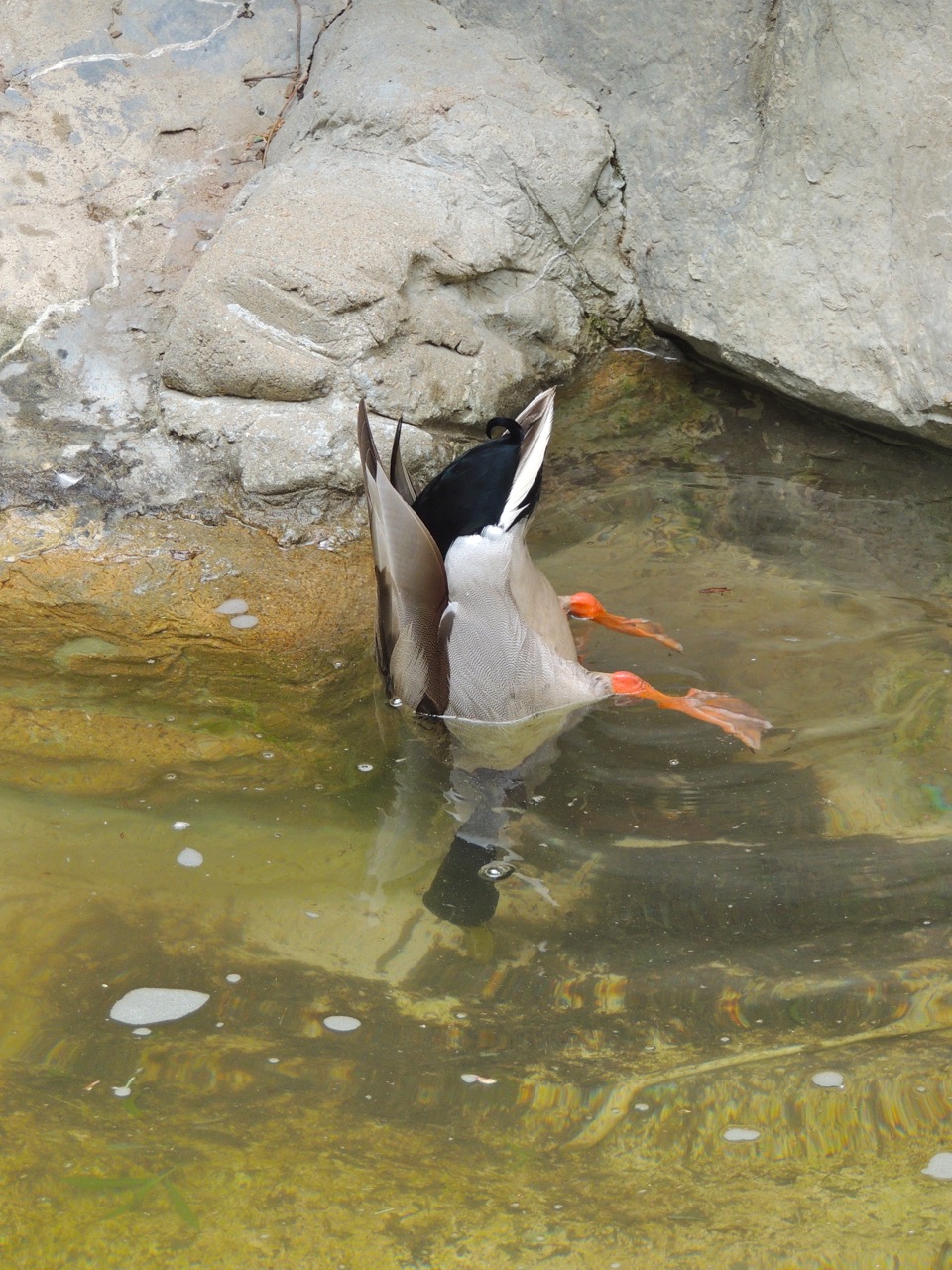
Dabbling means that they look for food by reaching into the water with their neck rather than diving below the surface.
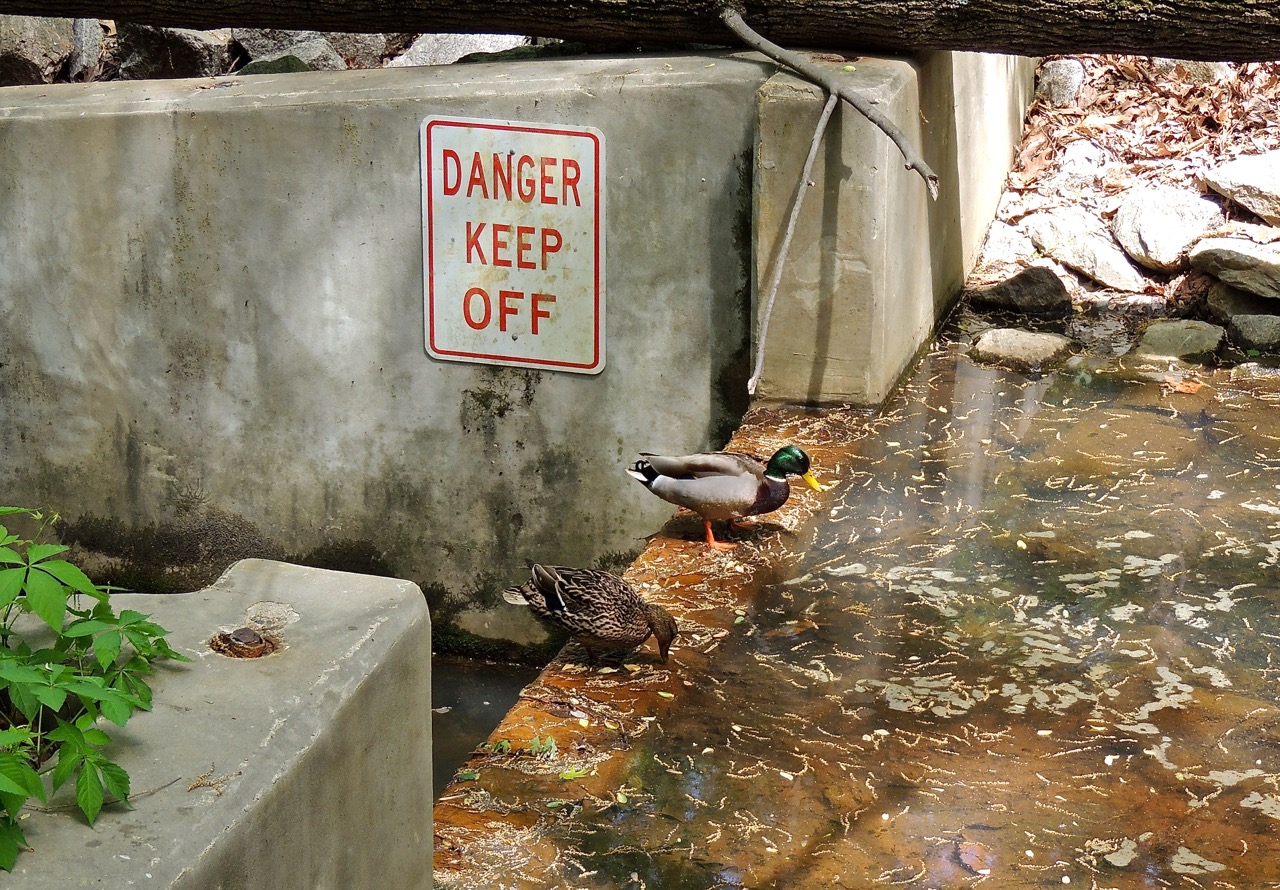
The Monticello Mallards do not always observe the warning signs in the park.
Vocalizations
The familiar duck quack is made only by the female Mallard. The male gives a quieter call with one or two notes.
Hear the vocalizations of the Mallard.
Notes
Mallards are the most widespread wild duck species in North America and the world, partly because they are so adaptable and can live in environments altered by humans. Monticello sometimes is not a safe or peaceful place for them because of dogs who run loose in the stream. This might be why a pair has not tried to nest in the park.
Origin of Names
Common Names: Mallard from the Old French for male.
Genus Name: Anas is Latin for duck.
Species Name: Platyrhynchos means broad bill.
Mallard video footage
Return to the Index
